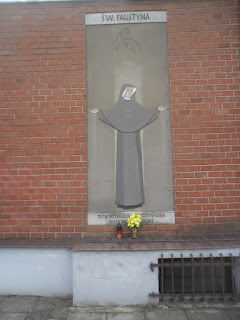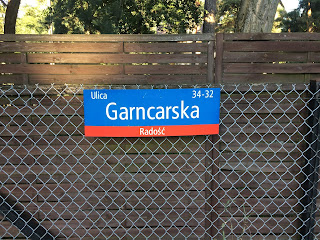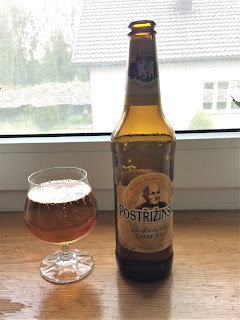A Laodicean, first published in
1880/1881, is one of Thomas Hardy’s lesser-known novels as it lacks the
gut-wrenching tragedy of The Mayor of Casterbridge (1886); Tess of
the d’Urbervilles (1891); Jude the Obscure (1895) etc. Still, it is
a fascinating read as it thematically revolves around a sense of the remnants
of the pre-modern world being lost, and the confusion/psychological pain that
this process brings. The latter is mainly seen through Hardy’s portrayal of one
of the central characters of the novel, Paula Power.
Throughout the novel, Paula suffers from
an internal struggle between having a nostalgic longing for the nobility and
aesthetic beauty of the medieval world, symbolised by the old castle that she
has inherited from her late father, and recognising that the remnants of this
world have been eclipsed by a simpler, drab, but more comfortable modern world.
Intermingled with all this is Paula’s growing relationship with the young
budding architect and Romantic figure of George Somerset. Paula is first
encountered in an early scene where she is about to be baptised into the
Baptist faith but cannot go through with this act of formal religious transition.
All of this is observed with interest by Somerset who seems to be a bit of a
religious seeker, himself, which becomes more apparent in another early scene
where he uses New Testament extracts and arguments from early Church fathers to
defend infant baptism against the protestations of the Baptist minister, Mr.
Woodwell. In response, the latter claims that Paula is “vulnerable to the
Medieval influences” of her castle.
Still early on in the novel, Paula tells
Somerset that she isn’t a “medievalist” but more of a “Greek”. After Hardy
describes the “stagnation” and redundancy of Stancy Castle chapel, in another
scene, Woodwell informs Somerset that Paula was receiving visits from “people
of old cavalier families” who believed in “Apostolic Succession”; was
influenced by her close friend, Charlotte De Stancy, whose family had lost
their aristocratic standing; and had never forgiven Woodwell, himself, for a
sermon in which he had compared her to “the church at Laodicea” (a church in
St. John’s Book of the Apocalypse/Book of Revelation renowned for being
lukewarm in belief). In the second half of the novel, Woodwell tells Somerset
that Paula has moved away from her “family creed of Calvinistic truth” towards
the more classical De Stancy worldview. During a quiet moment, Somerset
reflects on Paula being a “personification of the modern spirit”, but he also
recognises that she is influenced by a “chink of medievalism” which prompts
some kind of “Romanticism” inside her.
The action of the novel heats up in the
last 60-70 pages, with some of the most pivotal scenes being set in France. In
one key scene, Charlotte De Stancy’s brother (and George Somerset’s rival for
Paula) accompanies Paula to a cathedral in Paris, possibly Notre-Dame. De
Stancy points out that Paula’s roundhead ancestors had destroyed his ancestors’
castle, plus the statues and stained glass in a (probably high church)
cathedral, and yet she was now heading towards a Catholic cathedral. As the
pair enter the cathedral, the “evening darkness” is “scarcely broken” by a few
“dotted about candles”. After a while, they move to the choir section where
they are greeted with a “blaze of light, partly from the altar” and “more
particularly” from the image of a saint who some people “had assembled to
honour” which was “surrounded by candles” and many “flowering plants”. Here, a
“secondary radiance” from the candles is “reflected upward into their faces by
the polished marble pavement” which is only “interrupted” by the “shady forms
of the officiating priests”. Moreover, Paula points out that the women
competing to regain their flower pots near the saint’s image spoils the “solemn
effect” of what had gone on before. When De Stancy accuses Paula of being a
“‘harsh Puritan’”, she reveals that she’s often accused of being “‘worldly’”
and “‘half-and-half’”, which reintroduces
the recurring theme of Paula not quite being anything concrete in
belief. For me, this church scene is fascinating as Hardy describes it in almost
theatrical terms, and as a non-Catholic, he seems to be scratching at the
surface of certain aesthetic aspects that accompany Catholic religious
practice. In response, I have often wondered that if Hardy had dug further into
this aesthetic dimension, he may have become interested in Catholic doctrines,
and who knows what this may have lead to.
A little later on, Paula goes looking for
Somerset and the “beauties” of architecture in Lisieux. Despite having to pass
some “dreary suburban erections” from “the railway to the old quarter of town”,
Paula knew that Somerset would be working at one of the “medieval buildings”.
She then visits a “large church” which would have made “any Gothic architect
take lodgings in its vicinity for a fortnight”. Having failed to find Somerset
at the monumental church of St. Jacques, Paula becomes enchanted by a “steep
narrow street of antique character”, and is “transported to the Middle Ages”
encountering a scene that a “medievalist” would “revel in” and “die and be
buried in”. For Paula, this street is the living personification of the
“imaginations of antiquarians” with “smells from” the 16th century
hanging in the air “in all their original integrity and without a modern
taint”. Thus, while surrounded by such medieval grandeur, Paula appears to have
some kind of epiphany through which she gains a connection with an old world
not completely lost.
While still seeking the elusive Somerset
in Caen, Paula visits a church near her hotel to help pass away a “dull
dispiriting evening”. Inside, the church is only lit by “seven candles burning
before the altar” of a side chapel, with the “mass of the building being in
deep shade”, and some “motionless outlines” slowly revealing themselves to be
“kneeling women”. Momentarily, the unlocking of a confessional door by a priest
“sounded in the silence”. After a short while, a priest leads Paula to the room
of Mr. Cockton, Somerset’s assistant. Cockton reveals that Somerset “was sick
and tired of holy places” and was striving to find “‘some wicked spot or other”
to attain some “consolation which holiness could not give’”, although he may
not have really meant this. Hence, Somerset may have become disillusioned
through losing the motivation to pursue a medieval or Romantic outlook lost in
past time. In contrast, Paula does not seem able to shake off her pursuit of
Romantic experience and perception.
When finally catching up with Somerset,
Paula is told that she is “an enigma always”, and she acknowledges that
Somerset “‘knows a good many fibres’” of her character fearing that “‘some
uncanny influence of the dead De Stancys would drive” her away “from him”
again. In another turn of events, Charlotte De Stancy sends Paula a letter
revealing that she has joined a “‘Protestant sisterhood’” so as “‘to steal’”
herself away from the modern “‘social world’” that she rejects to attain a
“‘resting place till the great rest comes’”. In her “‘secluded home’”,
Charlotte promises to be even more devoted to her “‘very best friend’” with
“‘continuing love and friendship’” as Paula would “‘always be’” somehow
with her. In response, Paula weeps at Charlotte’s decision, and Somerset tries
to console her by saying that Charlotte “‘was genuine, if anybody ever was’”.
Here, Somerset may be suggesting that Charlotte is not a social actor, with the
latter role possibly being a
prerequisite for living in an increasingly modern world. Regarding this, Paula
views herself as a “‘representative of the new aristocracy of
internationality”, while Charlotte represents an “‘old aristocracy of
exclusiveness’”. Moreover, Paula acknowledges that she is what “‘poor Mr.
Woodwell said’”, a Laodicean from the Book of the Apocalypse/Book of
Revelation, a “‘neither cold nor hot’” person who cannot submit his/her
will to believe in things strongly. Reflecting on her modern self, Paula
believes that for her, “‘lukewarmth is not an accident but a provisional
necessity’”, recognising that even people’s “‘best emotions’” are only
“‘transitory’”.
After De Stancy Castle is burnt down,
Paula and Somerset decide against “‘rebuilding’” it unless “compelled” to do
so. Moreover, they decide to leave “the edifice in ruins” and to live in a
“mansion of independent construction” near “the old one” to be “unencumbered with the ghosts of an
unfortunate line”. To emphasise this, Somerset tells Paula that the “winter
rains will soon wash away the unsightly smoke from the walls”, with De Stancy
Castle becoming “‘beautiful in its decay’”. He also predicts that Paula will
recover from a mental “‘warp’” caused by the “‘medievalism’” of the “‘place’”.
In response, Paula questions whether she can ever perfectly accept and
represent the “‘modern spirit’”, wishing that Somerset was a De Stancy and that
her castle had not been burnt down. Thus, Paula cannot become a fully modern
person because she cannot completely let go of her pursuit of a medieval or
Romantic ethos, being trapped between the drab reality of her real, current
world and a nostalgic longing for a more heroic world that has been lost in
past time. Here, Thomas Hardy seems to be diagnosing a central feature of the
melancholia suffered by sentient modern people who seek a return to something
more beautiful, heroic, and metaphysical. Of course, Hardy’s focus on the
destructive effects of modern human melancholia is far more pronounced in his
great tragedies: The Woodlanders (1887) and The Return of the Native
(1878), and especially The Mayor of Casterbridge (1886), Tess of the
d’Urbervilles (1891), and Jude the Obscure (1895). But all this is
another story, of course.









































